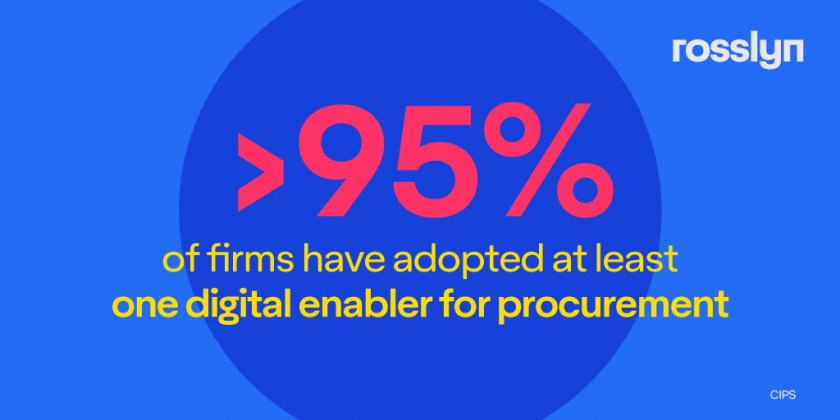What's new in procurement tech?

Procurement professionals could be forgiven for feeling overwhelmed with lists of the big new things in procurement technology. Every provider or consultant seems to have its own list. At least the Chartered Institute of Procurement & Supply (CIPS) has strong claim to be the most impartial and authoritative voice in procurement development. And in the CIPS’s view, the top five procurement technology trends influencing the discipline right now are: integrating a digital transformation strategy; adopting artificial intelligence systems; cybersecurity systems and protection; using big data to drive decisions; and blockchain infrastructure and transactions.
Integrating a digital transformation strategy
Integrating a digital transformation strategy is a business planning exercise, involving incorporating digital inputs and connectivity into all business processes, and especially procurement. Technology strategy and business strategy have to be one and the same, in the CIPS’s view, drawing on its surveys that show that over 95% of firms have adopted at least one digital enabler for procurement (chiefly, Cloud computing, Big Data, and the Internet of Things). And these adopters cite cost-effectiveness as the prime benefit of digital transformation.
Adopting artificial intelligence systems
AI systems, no matter what the creepy Steven Spielberg associations of the term, are about artificial intelligence as an enabling or assistive technology, like Amazon’s Alexa or Apple’s Siri. Machine Learning, Natural Language Processing, and Robotic Process Automation can all be used to track, interpret, and reproduce human decisions, speech, and actions, in ways that automate and streamline procurement processes. This kind of narrow AI takes the load off you and automates repetitive tasks by understanding what you do.
Cybersecurity systems and protection
Cybersecurity and protection is about safeguarding the huge volumes of data generated and used by digital procurement systems, as well as protecting the whole system from digital attacks or corruption. Data security firm, Security Scorecard, cites collaboration with the IT department, risk assessment, due diligence, and data encryption as the key steps needed, and emphasizes that cybersecurity has to extend through the whole supply chain, including vendors and partners, to proof the procurement process. A long, complex supply chain is vulnerable to digital intrusion along its entire length, and procurement specialists need to secure that chain to protect the business.
Using big data to drive decisions
Big Data is a driver for greater efficiency and decision-making in procurement. Modern procurement systems constantly generate actionable data that can be processed, digested, and actioned. Procurement data analytics can reduce spending, mitigate risk by predicting supply chain disruptions, enhance supplier knowledge, and optimize procurement and supply chain efficiency. However, such results need the analytical tools, as well as the data reservoirs, to drive them.
Blockchain infrastructure and transactions
Blockchain’s reception has arguably been coloured by bad publicity around cryptocurrency mining, although such issues are far from its application in procurement. The basic concept, of a ledger system that updates and records entries for a particular transaction or process everywhere across the connected internet, shouldn’t be that hard to understand. The Oxford College of Procurement and Supply identifies particular benefits of blockchain as increased transparency along the supply chain, tamper-proof self-verifying smart contracts, and lower costs with less human error.
Other technologies and developments in the pipeline include horizon technologies such as 3D printing, crowdsourcing, virtual reality data visualization, and wearables as examples of new developments still early in their adoption cycle. These may influence the future evolution of procurement, but their case is still not yet proven.
What is clear, though, is the imperative to adopt technology for procurement. The CIPS top trends stand out because they are most significant in current business adoption, and are actually empowering more competitive and effective businesses. Procurement professionals that don’t get behind them are liable to fall further and further behind, with grave consequences for their business.